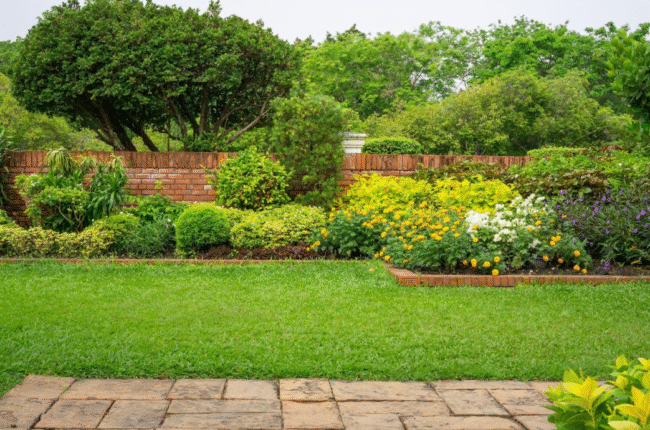
Gardens look the same all the time, all year long. Which is completely fine – that’s how it’s supposed to be. But what if you wanted a bit more change/variability and less predictability?
Would that be possible? Yes, it would.
Nobody is suggesting completely redoing the garden several times a year; that would be mental. But did you know that you can design your garden in a way that it changes as the year goes on?
You shouldn’t plant more – you should plant smarter. And I understand that this doesn’t mean much to you, but that’s really the whole point.
Keep reading, and I’ll tell you more about seasonal garden personality and what it all means!
Seasonal Garden Personality
This means that your garden changes its ‘mood’ (figure of speech) and looks different as the days pass. You get bright, playful spring flowers, rich tones of autumn leaves, and the lush, full look of summer compared to the bare appearance in the winter.
Sure, it all depends on what you have in the garden, but you get the idea. It’s versatile, ever-changing.
Best of all, these changes happen naturally. You don’t have to lift a finger.
All these changes happen because of changes in light, temperature, and amount of rainfall – all of which are vastly different depending on the region.
For instance, longer days help plants bloom, while cooler air and shorter daylight in the autumn slow things down and make the colors deeper. Precipitation is also a very important factor; sometimes, it gives the plants a boost, and in drier months, it causes them to conserve their energy.
Caution: But keep in mind that the plants you have in your garden can greatly affect how many changes occur and how noticeable they are.
The key to designing a garden with a proper ‘seasonal personality’ is to plan for the in-between months, not just those few peaks you get every year when everything looks perfect and it all blooms.
One thing that can be very helpful is to refresh beds between seasons with fresh ground cover. If I were you, I’d find mulch near me to do this. A local supplier or store will have plenty of options to choose from.
Mulch is great because it keeps the soil healthy and adds new texture to the garden. Plus, the garden will look more ‘premium’, which is always nice.
How to Keep Your Garden Changing All Year
Remember that you’re not planting for one moment in time or a few days of the year. Your goal is to create a space that can shift, adapt, and stay interesting at all times.
Here’s how to do it:
Choose the Plants Carefully
Choose plants that take turns in the spotlight. Spring is ideal for tulips, daffodils, and lilacs. In the summer, the focus is on daylilies, coneflowers, and hydrangeas. Autumn offers asters, ornamental grasses, and Japanese maples. Winter is much less eventful, but it still has life with hellebores, evergreens, and red twig dogwood.
Include plants with beautiful foliage so the garden looks good even if it’s not in bloom.
Seasonal Color Moods
Color sets the tone of the garden.
Here’s an example: warm reds, oranges, and yellows create a lively, vibrant look that’s perfect for summer. Cooler blues, purples, periwinkles, and soft greens make the garden look calmer and fresher, which is ideal for spring.
You get the idea.
Let the color palette change throughout the year – pastels in spring, bright colors in summer, deeper shades in autumn, and muted colors in winter.
Layers and Textures
Texture makes your garden beautiful at all times. Pair fine, delicate leaves with bold, broad ones for contrast that works even if there are no flowers around. Use height to create depth, so put low ground covers in the front, plants of medium height in the middle, and taller shrubs and trees at the back.
In winter, seed heads, interesting bark, and the shapes of bare branches provide structure and visual interest even though everything else is faded.
Group Plants to Make Transitions Smooth
It doesn’t seem like it, but seasons change fast, and if you don’t plan with that in mind, this will leave your garden looking bare. Group plants with overlapping bloom times to make sure that, as one variety fades, another can take over.
Plants that bloom for a long time can be your ‘anchor plants’ and fill the gaps, while small ‘transition zones’ can have annuals or seasonal highlights. This way, it’ll be easy to refresh the look without having to redesign everything.
Conclusion
By designing your garden to have a seasonal personality, it stops being that static background image you see from your family room and becomes something with actual character to it.
A garden that’s never boring to look at, it’s nice and beautiful, plus it even surprises you with its freshness.
What more can you ask for?
